Morphology and Mechanical Properties of Polyimide Films: The Effects of UV Irradiation on Microscale Surface
Abstract
:1. Introduction
2. Experimental
2.1. Materials
2.2. Methods
3. Results and Discussion
4. Conclusions
Supplementary Materials
Acknowledgments
Author Contributions
Conflicts of Interest
References
- Verker, R.; Grossman, E.; Eliaz, N. Erosion of POSS-polyimide films under hypervelocity impact and atomic oxygen: The role of mechanical properties at elevated temperatures. Acta Mater. 2009, 57, 1112–1119. [Google Scholar] [CrossRef]
- Srinivasan, R. Ablation of polyimide (Kapton™) films by pulsed (ns) ultraviolet and infrared (9.17 µm) Lasers. Appl. Phys. A 1993, 56, 417–423. [Google Scholar]
- Li, R.; Li, C.; He, S.; Di, M.; Yang, D. Damage effect of keV proton irradiation on aluminized Kapton film. Radiat. Phys. Chem. 2008, 77, 482–489. [Google Scholar] [CrossRef]
- Kleiman, J.I.; Gudimenko, Y.I.; Iskanderova, A.; Tennyson, R.C.; Morison, W.D. Surface structure and properties of polymers irradiated with hyperthermal atomic oxygen. Surf. Interface Anal. 1995, 23, 335–341. [Google Scholar] [CrossRef]
- Shao, T.; Zhang, C.; Long, K.; Zhang, D.; Wang, J.; Yan, P.; Zhou, Y. Surface modification of polyimide films using unipolar nanosecond-pulse DBD in atmospheric air. Appl. Surf. Sci. 2010, 256, 3888–3894. [Google Scholar] [CrossRef]
- Gupta, S.K.; Gupta, R.; Singh, P.; Kumar, V.; Jaiswal, M.K.; Chakarvarti, S.K.; Kumar, R. Modifications in physico-chemical properties of 100 MeV oxygen ions irradiated polyimide Kapton-H polymer. Nucl. Instrum. Methods Phys. Res. Sect. B Beam Interact. Mater. At. 2017, 406, 188–192. [Google Scholar] [CrossRef]
- Campos, N.; Perez-Mas, A.M.; Alvarez, P.; Menéndez, R.; Gómez, D. Surface treatment of polyimide substrates for the transfer and multitransfer of graphene films. Appl. Surf. Sci. 2015, 349, 101–107. [Google Scholar] [CrossRef]
- Barshilia, H.C.; Ananth, A.; Gupta, N.; Anandan, C. Superhydrophobic nanostructured Kapton® surfaces fabricated through Ar + O2 plasma treatment: Effects of different environments on wetting behaviour. Appl. Surf. Sci. 2013, 268, 464–471. [Google Scholar] [CrossRef]
- Chunyan, L.; Frank, E.S.; Richard, G.A.; Chong, H.A.; Ian, P. Polymer flip-chip bonding of pressure sensors on a flexible Kapton film for neonatal catheters. J. Micromech. Microeng. 2005, 15, 1729. [Google Scholar]
- Chahadih, A.; Cresson, P.Y.; Hamouda, Z.; Gu, S.; Mismer, C.; Lasri, T. Microwave/microfluidic sensor fabricated on a flexible kapton substrate for complex permittivity characterization of liquids. Sens. Actuators A Phys. 2015, 229, 128–135. [Google Scholar] [CrossRef]
- Hassan, J.J.; Mahdi, M.A.; Kasim, S.J.; Ahmed, N.M.; Hassan, H.A.; Hassan, Z. Fast UV detection and hydrogen sensing by ZnO nanorod arrays grown on a flexible Kapton tape. Mater. Sci.-Pol. 2013, 31, 180–185. [Google Scholar] [CrossRef]
- Qi, H.; Qian, Y.; Xu, J.; Li, M. Studies on atomic oxygen erosion resistance of deposited Mg-alloy coating on Kapton. Corros. Sci. 2017, 124, 56–62. [Google Scholar] [CrossRef]
- Deng, W.; Jin, L.; Zhang, B.; Chen, Y.; Mao, L.; Zhang, H.; Yang, W. A flexible field-limited ordered ZnO nanorod-based self-powered tactile sensor array for electronic skin. Nanoscale 2016, 8, 16302–16306. [Google Scholar] [CrossRef] [PubMed]
- Ortelli, E.E.; Geiger, F.; Lippert, T.; Wei, J.; Wokaun, A. UV-laser-induced decomposition of Kapton studied by infrared spectroscopy. Macromolecules 2000, 33, 5090–5097. [Google Scholar] [CrossRef]
- Himmelbauer, M.; Arenholz, E.; Bäuerle, D.; Schilcher, K. UV-laser-induced surface topology changes in polyimide. Appl. Phys. A 1996, 63, 337–339. [Google Scholar] [CrossRef]
- Gotoh, K.; Nakata, Y.; Tagawa, M.; Tagawa, M. Wettability of ultraviolet excimer-exposed PE, PI and PTFE films determined by the contact angle measurements. Colloids Surf. A Physicochem. Eng. Asp. 2003, 224, 165–173. [Google Scholar] [CrossRef]
- Chen, W.; Zhang, J.; Fang, Q.; Hu, K.; Boyd, I.W. Surface modification of polyimide with excimer UV radiation at wavelength of 126 nm. Thin Solid Films 2004, 453, 3–6. [Google Scholar] [CrossRef]
- Hui, G.; Xin, L.; Liwu, L.; Xinli, X.; Yanju, L.; Jinsong, L. Study on performances of colorless and transparent shape memory polyimide film in space thermal cycling, atomic oxygen and ultraviolet irradiation environments. Smart Mater. Struct. 2017, 26, 095001. [Google Scholar]
- Adamcik, J.; Lara, C.; Usov, I.; Jeong, J.S.; Ruggeri, F.S.; Dietler, G.; Lashuel, H.A.; Hamley, I.W.; Mezzenga, R. Measurement of intrinsic properties of amyloid fibrils by the peak force QNM method. Nanoscale 2012, 4, 4426–4429. [Google Scholar] [CrossRef] [PubMed]
- Zhao, B.; Wang, X.; Song, Y.; Hu, J.; Lu, J.; Zhou, X.; Tai, R.; Zhang, X.; Zhang, L. Stiffness and evolution of interfacial micropancakes revealed by AFM quantitative nanomechanical imaging. Phys. Chem. Chem. Phys. 2015, 17, 13598–13605. [Google Scholar] [CrossRef] [PubMed]
- Smolyakov, G.; Pruvost, S.; Cardoso, L.; Alonso, B.; Belamie, E.; Duchet-Rumeau, J. AFM PeakForce QNM mode: Evidencing nanometre-scale mechanical properties of chitin-silica hybrid nanocomposites. Carbohydr. Polym. 2016, 151, 373–380. [Google Scholar] [CrossRef] [PubMed]
- Andrady, A.L.; Harnid, S.H.; Hu, X.; Torikai, A. Effects of increased solar ultraviolet radiation on materials. J. Photochem. Photobiol. B Biol. 1998, 46, 96–103. [Google Scholar] [CrossRef]
- Srinivasan, R.; Hall, R.R.; Loehle, W.D.; Wilson, W.D.; Allbee, D.C. Chemical transformations of the polyimide Kapton brought about by ultraviolet laser radiation. J. Appl. Phys. 1995, 78, 4881–4887. [Google Scholar] [CrossRef]
- Matsui, S.; Nakagawa, T. Effect of ultraviolet light irradiation on gas permeability in polyimide membranes. II. Irradiation of membranes with high-pressure mercury lamp. J. Appl. Polym. Sci. 1998, 67, 49–60. [Google Scholar]
- Ding, Y.H.; Deng, X.H.; Jiang, X.; Zhang, P.; Yin, J.R.; Jiang, Y. Nanoscale mechanical characterization of PMMA by AFM nanoindentation: A theoretical study on the time-dependent viscoelastic recovery. J. Mater. Sci. 2013, 48, 3479–3485. [Google Scholar] [CrossRef]
- Hatami, M.; Ganji, D.D.; Gorji-Bandpy, M. Experimental and numerical analysis of the optimized finned-tube heat exchanger for OM314 diesel exhaust exergy recovery. Energy Convers. Manag. 2015, 97, 26–41. [Google Scholar] [CrossRef]
- Chien, C.-H.; Hu, Y.-L.; Su, T.-H.; Liu, H.-T.; Wang, C.-T.; Yang, P.-F.; Lu, Y.-X. Effects of bolt pre-loading variations on performance of GDL in a bolted PEMFC by 3-D FEM analysis. Energy 2016, 113, 1174–1187. [Google Scholar] [CrossRef]
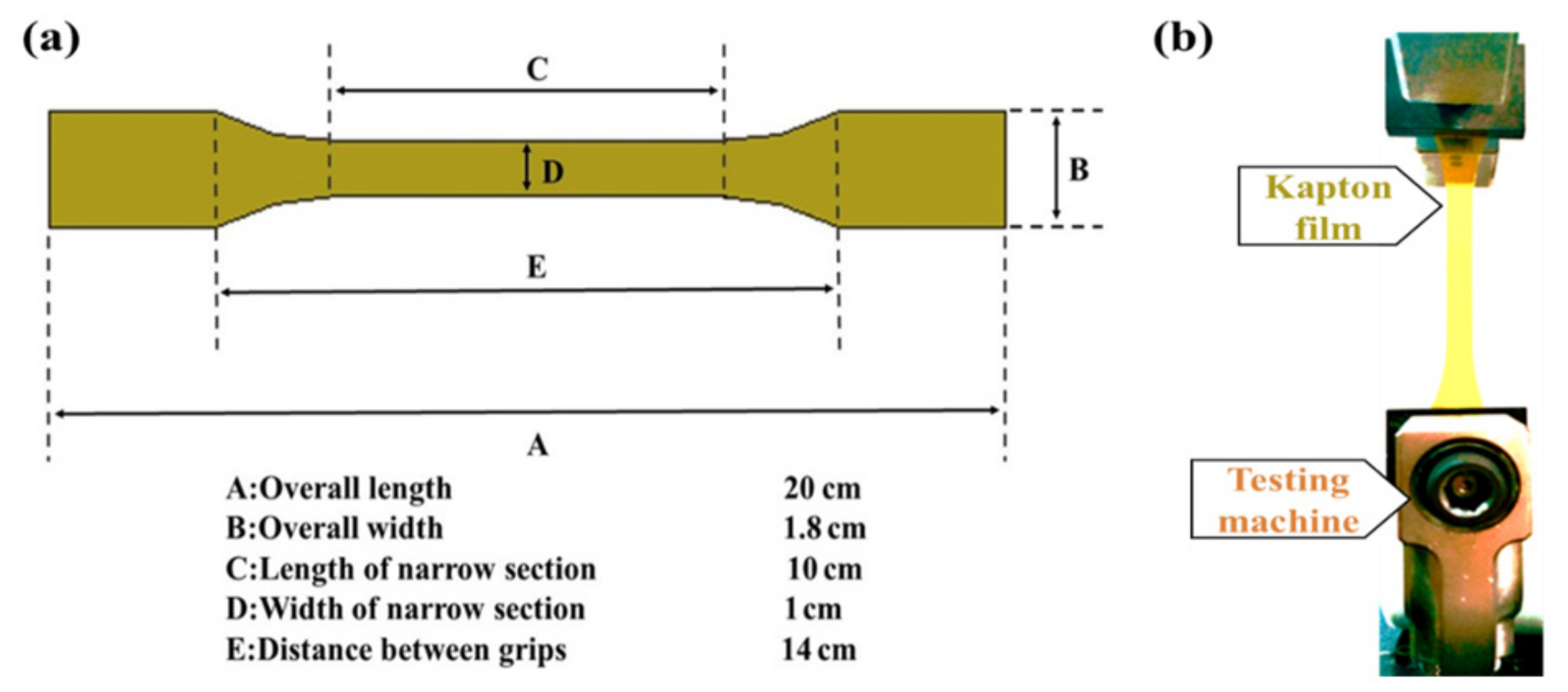
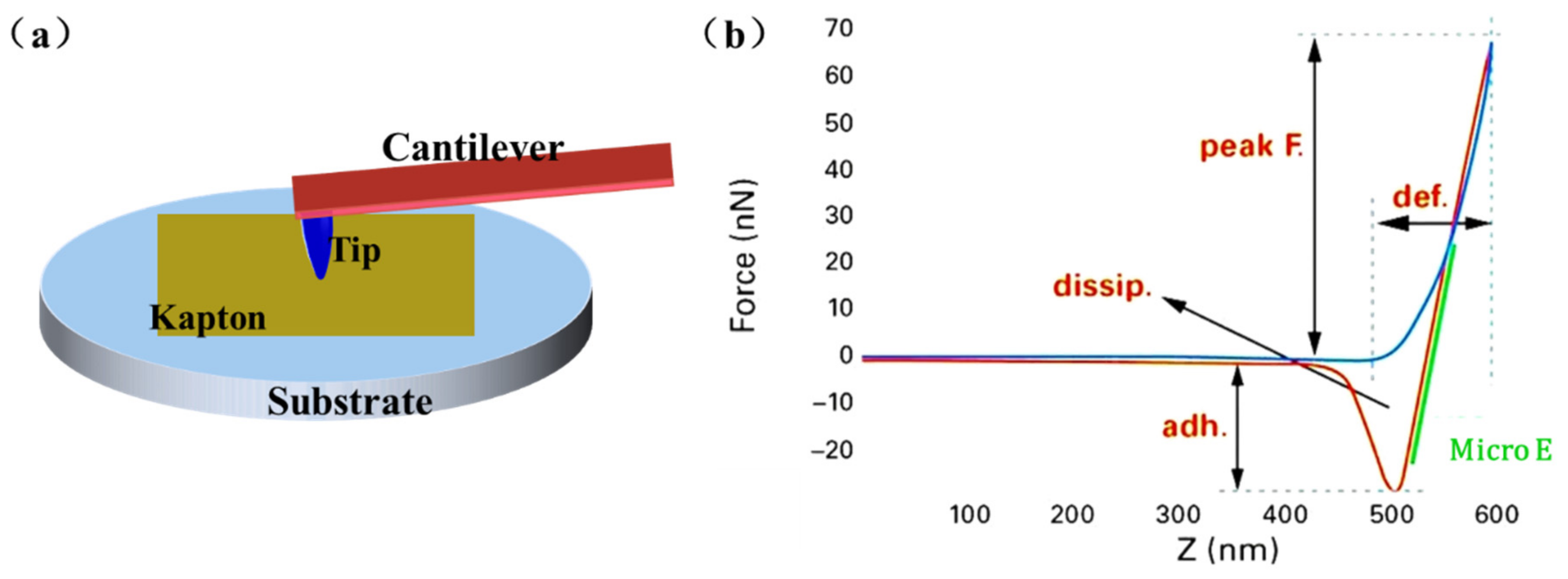
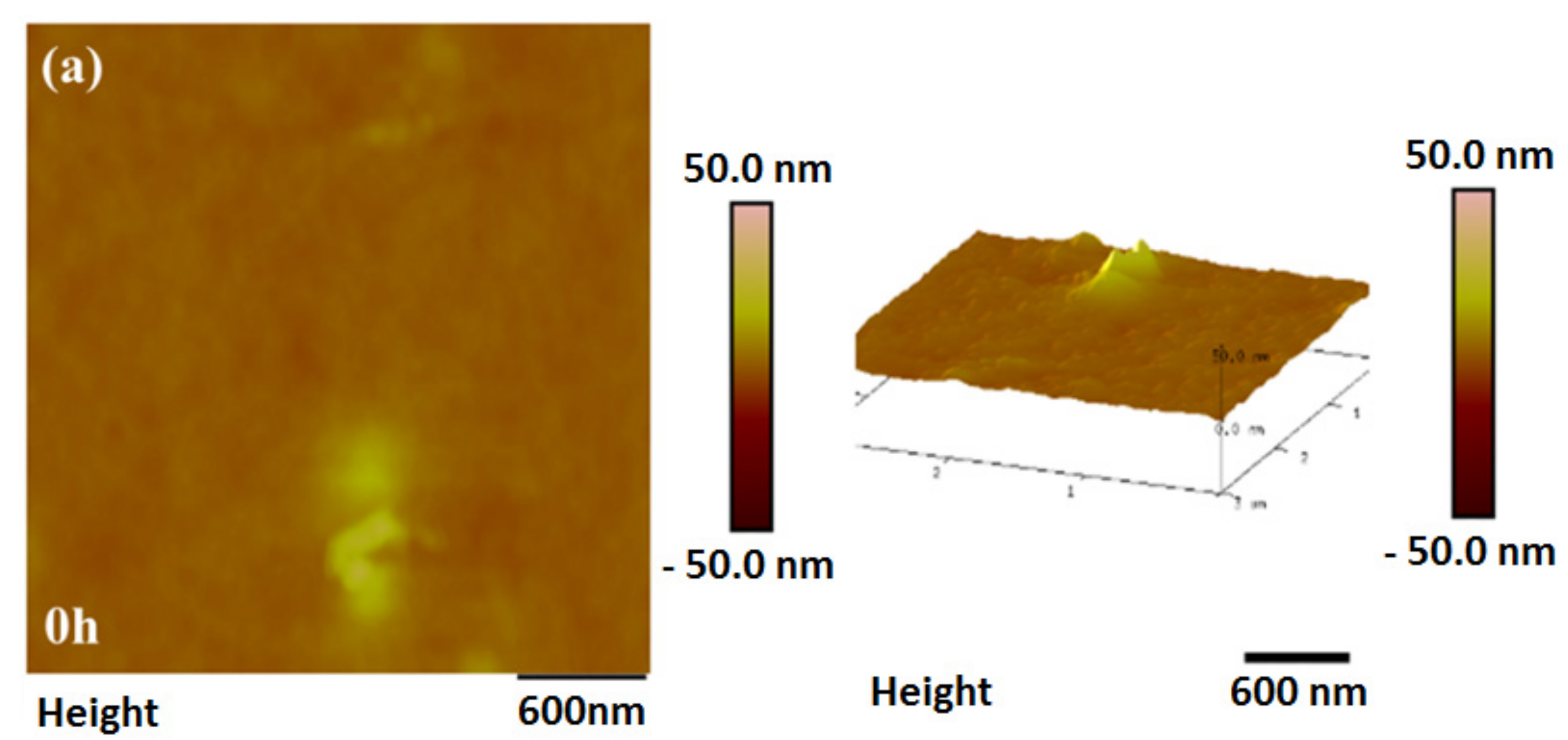
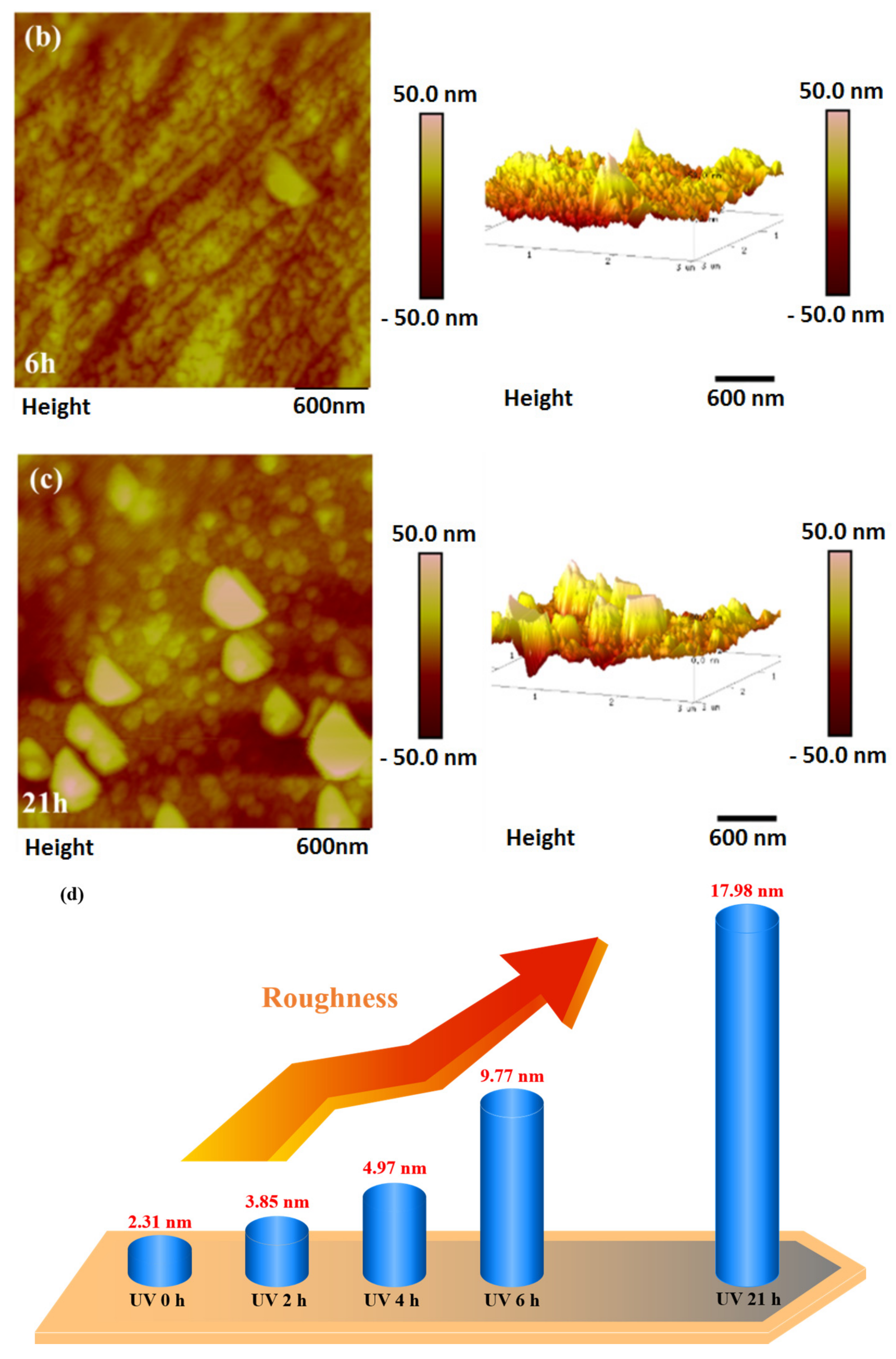

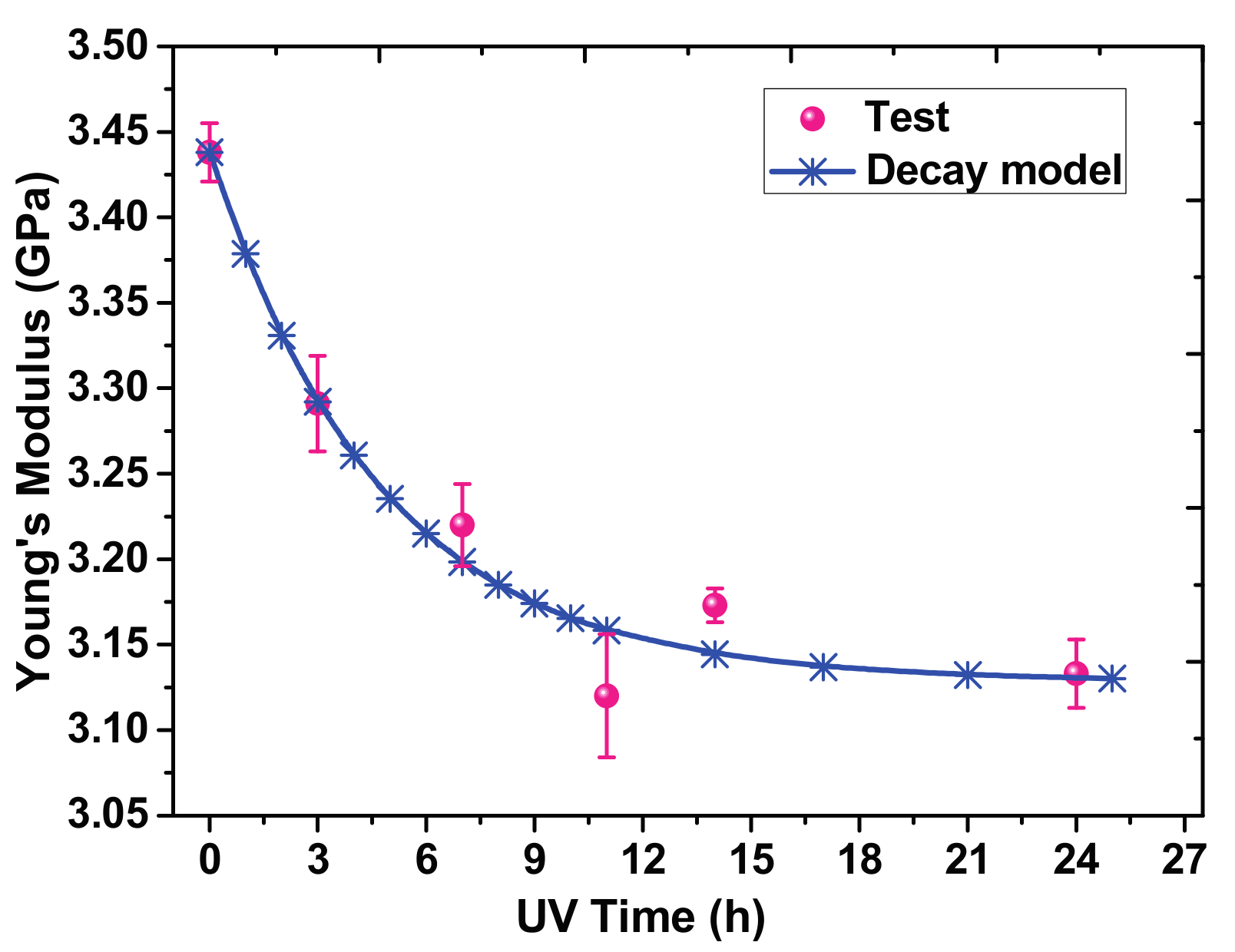
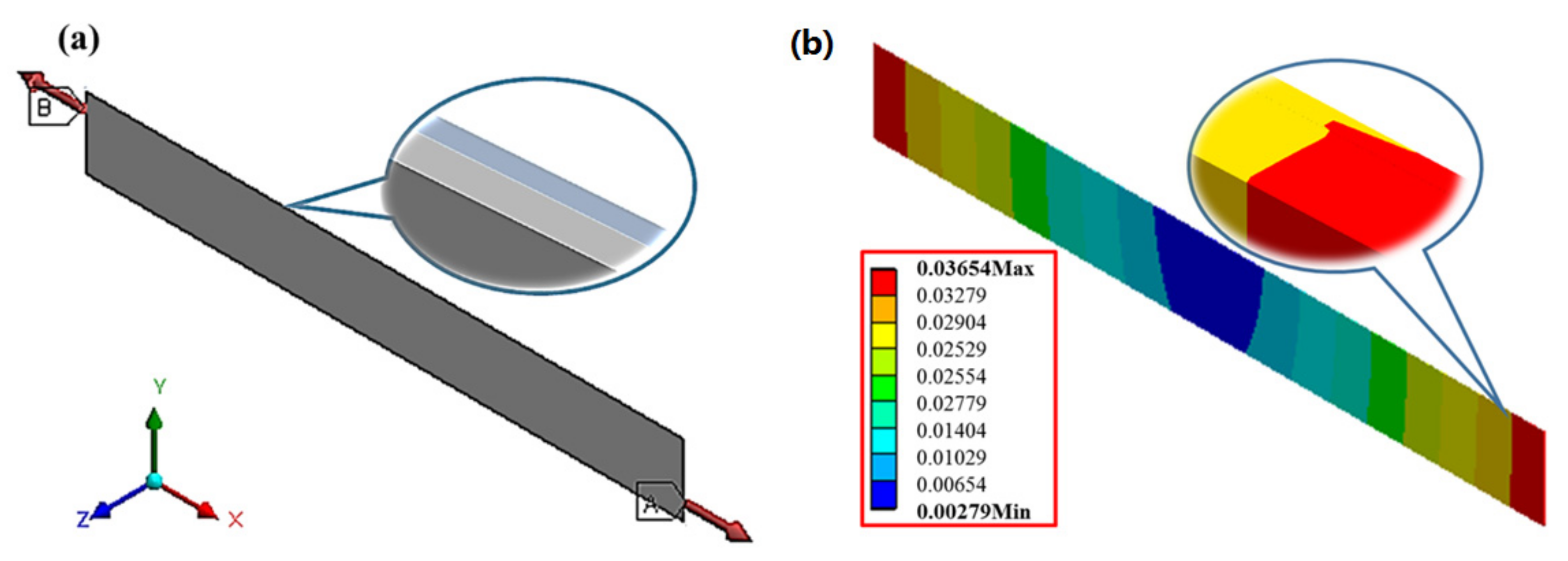

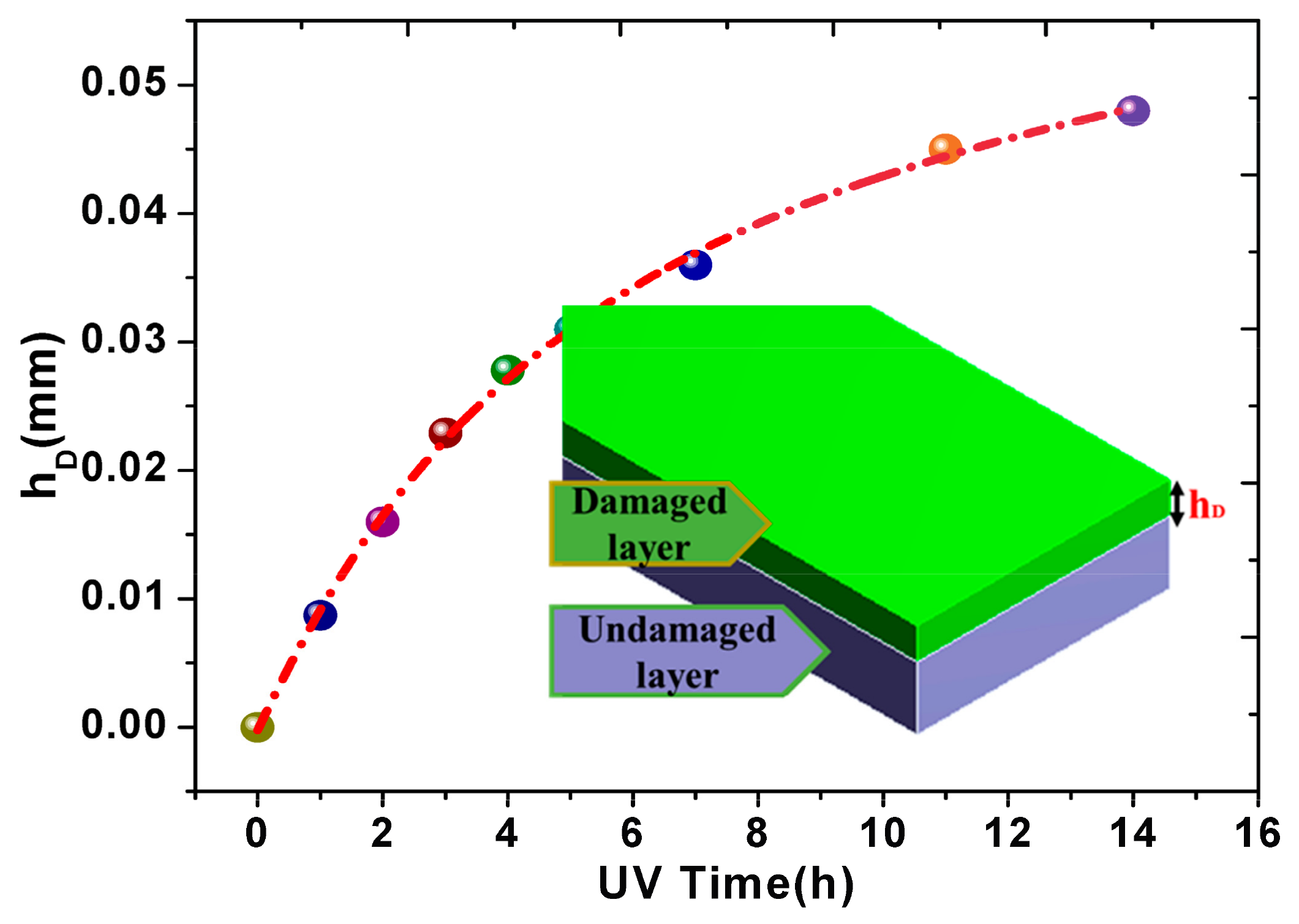
© 2017 by the authors. Licensee MDPI, Basel, Switzerland. This article is an open access article distributed under the terms and conditions of the Creative Commons Attribution (CC BY) license (http://creativecommons.org/licenses/by/4.0/).
Share and Cite
Qu, C.; Hu, J.; Liu, X.; Li, Z.; Ding, Y. Morphology and Mechanical Properties of Polyimide Films: The Effects of UV Irradiation on Microscale Surface. Materials 2017, 10, 1329. https://doi.org/10.3390/ma10111329
Qu C, Hu J, Liu X, Li Z, Ding Y. Morphology and Mechanical Properties of Polyimide Films: The Effects of UV Irradiation on Microscale Surface. Materials. 2017; 10(11):1329. https://doi.org/10.3390/ma10111329
Chicago/Turabian StyleQu, Changzi, Junsong Hu, Xing Liu, Zheng Li, and Yanhuai Ding. 2017. "Morphology and Mechanical Properties of Polyimide Films: The Effects of UV Irradiation on Microscale Surface" Materials 10, no. 11: 1329. https://doi.org/10.3390/ma10111329




